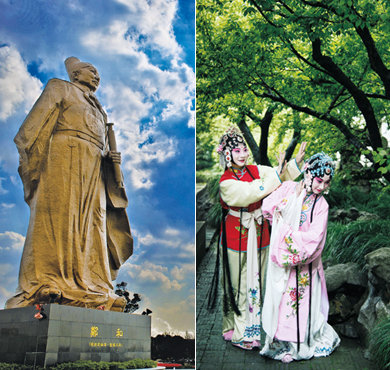Taicang was also called Loudong because it was located east to Loujiang. It has long been the home to culture with rich cultural heritages and long education benefits and formed the unique Loudong Culture. It is where Zheng He of the Ming Dynasty set sail for his seven grand voyages.

It is also the cradle of the beautiful classical music and Loudong Culture, and the birthplace of the myth of the Cowboy and Weaver Girl. The well-preserved five stone arch bridges from the Yuan Dynasty were of unique style and had been listed as one of the officially protected monuments and sites of China.
Today, Taicang shows great cultural diversity and has been titled the home of bridge game, martial arts, lion and dragon dance, classical music, folk music and dancing.

Taicang has long been home to great cultural and arts masters, such as Wang Shizhen and Wu Weiye, litterateurs of the Ming and Qing dynasties, Zhang Pu, the head of Fu She (the Society of Classical Learning Restoration), Qiu Ying, one of the Top Four Painters of the Ming Dynasty, Wang Shimin, Wang Jian and Wang Yuanqi, representatives of Loudong painting school, Tang Wenzhi, famous educator and founder of Jiao Tong University, Zhu Qizhan and Song Wenzhi, modern painters, and Wu Xiaobang, founder of the new dancing arts of China.
In the scientific field, Taicang has nurtured 11 academicians of the Chinese Academy of Engineering and Chinese Academy of Sciences, including Chienshiung Wu (Wu Jianxiong), who was honored the “Mrs. Courier of China”, Steve Chu (Zhu Diwen), the winner of the Nobel Prize in Physics, and Gu Maoxiang, Lu Youmei, Gong Zhiben, Tang Xiaowei, Tang Xiaoyan, Zou Shichang, Huang Shengnian, Wu Jianping and Yang Shengli.

